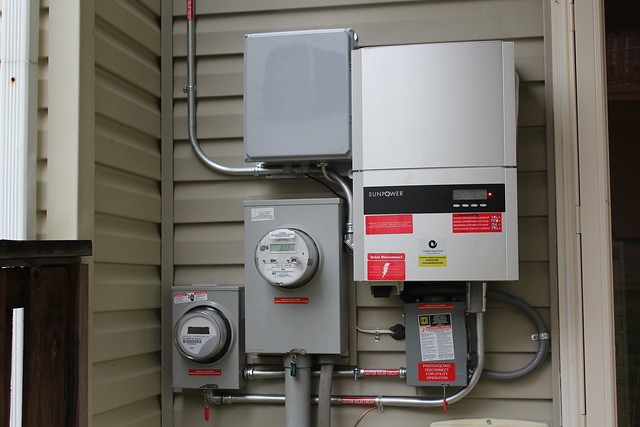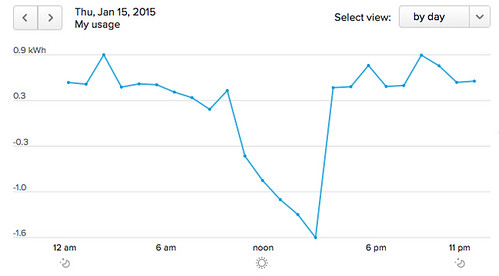Going Solar: The System
This is part of an ongoing essay detailing my experiences with solar energy. To see if solar is right for you, visit SunPower.
The System
The solar photovoltaic system is composed of solar panels, a mounting system, an inverter, a production meter, and a bunch of circuit breakers.
The solar panels convert the sun's energy into DC electricity, which the inverter then converts into AC; the electricity flows through a production meter (which only tracks electricity produced by the panels) and is then backfed through my electrical panel.
The energy generated by the solar panel system serves my home's electrical load first. If I need more electricity than the panels are producing, I'll pull from the utility grid as needed, just like I did before the system was installed. But if the system produces more energy than the house needs at any given time, the excess is pushed back onto the grid. This is referred to as "spinning the meter backwards," and the excess electricity is credited by BGE at the same price I would pay if I were to buy it from them.
This back and forth is measured by a bi-directional utility "net meter," which tracks electricity flowing both from and to the grid. For example, this chart (from BGE Smart Energy Manager) shows my utility-fed electric usage dropping below zero when the solar panels produce more electricity than my home requires.
If the power goes out, the solar system stops producing. Battery backup systems do exist that would allow me to carry on uninterrupted by power outages, but they're still quite expensive and error-prone. If my power goes out, the power is out.
Panels
There are sixteen SunPower E-20 SPR-245NE-WHT-U-240 modules, each generating a maximum of 245W DC. They're about five feet long, two and a half feet in width, and two inches thick; each weighs 33 pounds, putting 2.46 PSF onto my roof.
Each of the panels is warranted (both by SEW and the manufacturer) for 25 years.
Mounting Rail
Six Unirac rails are mounted vertically to the roof face, bolted to the top chord of the roof trusses using 3" x 5/16 stainless steel lag bolts. Each column of solar panels is attached to two rails.
Inverter
A SunPower SPR-3801f-240 inverter is warranted by SunPower for 10 years, but also warranted by SEW for 25 years.
Next: Installation Day
Last Modified: 2020-08-09
§
Home | All Entries | Search | Errata
Copyright © 2014-2024 Alex Moundalexis, licensed under a Creative Commons License. Some rights reserved.

